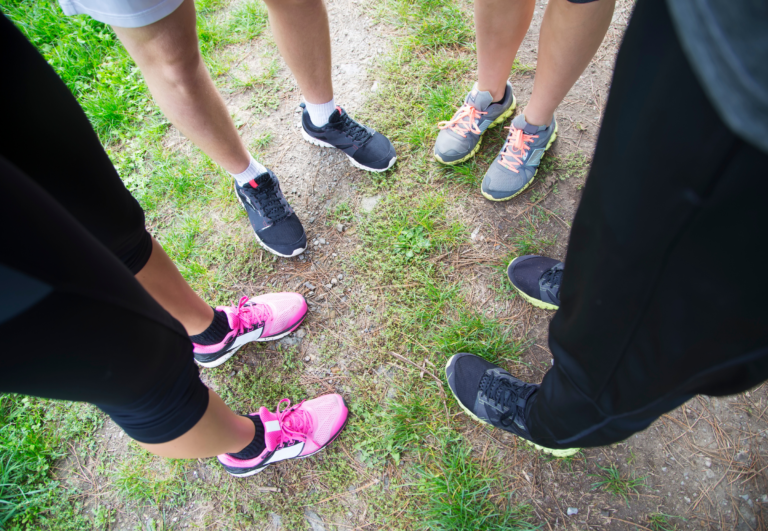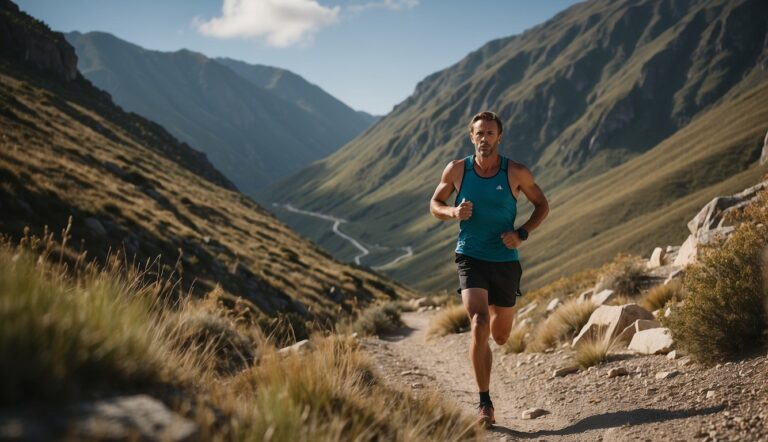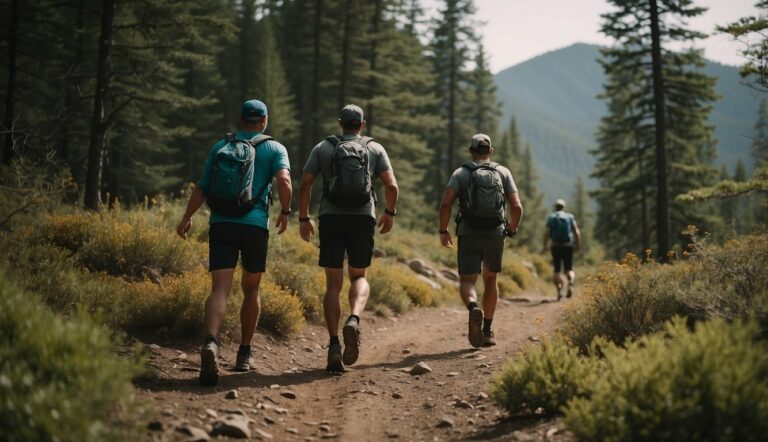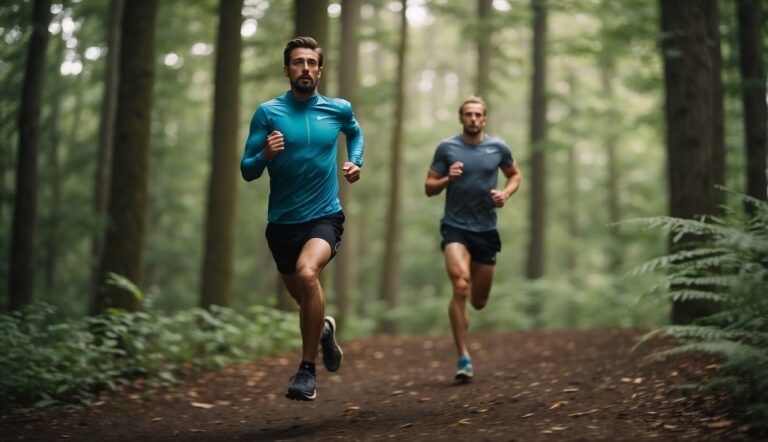Trail Running Shoe Selection for Beginners: Your Essential Guide
Selecting the right trail running shoes is a fundamental step for any beginner venturing into the sport. As an experienced UESCA certified running coach, I’ve seen firsthand how the proper footwear can enhance performance and reduce the risk of injury on the trails. When choosing your first pair, it’s crucial to prioritize fit and comfort over style or trends, because the trails offer unique challenges such as uneven terrain and varied surfaces.
As trail running typically involves uneven terrain with rocks, roots, and mud, your shoes should provide adequate protection, traction, and stability. Cushioning is also a key factor for comfort, especially for longer distances. Beginners should look for shoes that strike a balance between being lightweight and offering enough cushioning to absorb the impact of the trail while ensuring a natural foot strike.
Keep in mind that trail running shoes come with different features to address specific types of trails. Beginners might want to start with a light trail shoe, offering enough grip and stability without being too aggressive. As your experience and trail complexity increase, so can the specificity of your footwear, possibly moving towards shoes designed for rugged or off-trail running that offer enhanced features for those environments.

An Overview of Trail Running Shoes
Choosing the right trail running shoes is crucial for any beginner, as they directly impact comfort, stability, and performance. Essential factors to consider are shoe anatomy, types, fit, and comfort, all of which play a role in both protection and running experience on the trails.
Anatomy of a Trail Running Shoe
Trail running shoes are specifically designed to tackle off-road conditions with features that enhance durability and foot protection. The key components to focus on are:
- Traction: A rugged lug pattern on the sole determines grip on various surfaces, crucial for safety and stability.
- Cushioning: EVA foam is common for providing a comfortable fit that absorbs shock without adding excessive weight.
- Protection: A rock plate may be included to shield feet from sharp rocks and roots, while reinforced toe guards add durability.
- Flexibility vs. Torsional Rigidity: The shoe must balance flexible movement with the stiffness needed for torsional rigidity, which prevents the shoe from twisting too much on uneven terrain.
- Heel-to-Toe Drop: A traditional drop encourages a heel strike, whereas a zero drop promotes a forefoot strike.
- Toe Box: Sufficient room for toe splay enhances stability and balance.
| Feature | Function |
|---|---|
| Traction | Provides grip and stability on various terrains |
| Cushioning | Absorbs shock and adds comfort |
| Protection | Shields feet from hazards and contributes to durability |
| Midsole Rigidity | Balances flexibility with stability on uneven terrain |
| Heel-to-Toe Drop | Influences running gait and impact distribution on foot strike |
| Toe Box | Allows toes to spread for balance and prevents compression |
Shoe Type Considerations
When selecting trail running shoes, it’s important to consider the type of trails and personal comfort.
- For groomed trails, a lightweight shoe with moderate cushioning may suffice.
- In technical terrain, durability and a more protective, stable feel are essential.
- Minimalist shoes are another option, which emphasize natural foot motion and a close-to-ground feel but offer less cushioning.
Fit and Comfort
A comfortable fit is paramount for any trail running shoe. Finding the right fit involves:
- Ensuring a snug feel around the midfoot while leaving some space in the toe box.
- Checking for heel lift to predict potential blistering and considering the right lightweight materials for breathability.
- Remembering that fit and comfort can directly influence your performance and enjoyment on the trails.
Keep these points in mind as you try on various shoes to find the perfect trail companion.
Choosing the Right Shoes for Your Trail

When selecting trail running shoes, the primary factors to consider include the terrain you’ll encounter and how your foot falls with each stride. I’ll help you navigate these considerations to find the right footwear for your trail adventures.
Shoe Selection by Terrain Type
Light Trail: Ideal for well-maintained trails with fewer obstacles such as rocks and roots. Look for shoes that offer moderate cushioning and are responsive enough to handle occasional unevenness.
- Moderate Terrain: If your local trails have more irregularities, but aren’t overly rugged, choose shoes with excellent traction and some protective features, like a rock plate, but without the heft of shoes designed for the most technical terrain.
- Rugged / Technical Terrain: For trails replete with obstacles or steep, rocky inclines, opt for maximum protection and support. Shoes should have a durable Vibram Megagrip outsole or similar, substantial midsole cushioning for impact absorption, and a reinforced upper.
Personal Biomechanics and Shoe Selection
Understanding your biomechanics is just as important as knowing the trail. Here’s what to look for:
- Pronation: Pronation describes the rotation of your foot upon landing. If you have neutral pronation, most shoes will suit you. Overpronators require stability, while underpronators, also known as supinators, need more cushioning.
- Heel-to-Toe Drop: Some runners prefer zero-drop shoes for a more natural running form, which means the heel and toe are the same distance from the ground. While supportive of natural biomechanics, transitioning to zero-drop should be done gradually to avoid injury.
Top Trail Running Shoes for Beginners
Selecting the right trail running shoes as a beginner is crucial for comfort and performance on varied terrain. I prioritize a blend of cushioning for comfort, durability for the rigors of trails, and stability for uneven surfaces. Each shoe listed caters to developing runners’ needs, balancing these factors with the specificity of men’s and women’s designs.
Men’s Trail Running Shoes
- Altra Lone Peak 7: Ideal for men who seek a zero-drop shoe with a wide toe box, the Altra Lone Peak 7 ensures a natural foot position and ample room for toe splay.
- Hoka Speedgoat 5: Known for its superior cushioning, the Hoka Speedgoat 5 offers a comfortable and protective ride even on the most rugged trails, making it perfect for beginners.
Stack Height and Cushioning:
- Altra Lone Peak 7: Moderate cushioning
- Hoka Speedgoat 5: High cushioning
Terrain Suitability:
- Altra Lone Peak 7: Light to rugged trails
- Hoka Speedgoat 5: Rugged trails
Special Features:
- Altra Lone Peak 7: Wide toe box
- Hoka Speedgoat 5: Vibram® Megagrip rubber outsole
Women’s Trail Running Shoes
- Brooks Cascadia 16: Brooks offers a dependable option for women starting out on the trails, with a balanced stack height and a versatile grip for different surfaces.
- Salomon Pulsar Trail: For those looking for a lightweight option, Salomon’s Pulsar Trail provides responsive cushioning and secure foot lockdown.
Stack Height and Cushioning:
- Brooks Cascadia 16: Moderate cushioning
- Salomon Pulsar Trail: Moderate to low cushioning
Terrain Suitability:
- Brooks Cascadia 16: Light to moderate trails
- Salomon Pulsar Trail: Primarily light trails
Special Features:
- Brooks Cascadia 16: GORE-TEX® upper for waterproof protection
- Salomon Pulsar Trail: Contragrip® outsole for optimal traction
My recommendations focus on shoes that are approachable for newcomers to trail running, with the ability to accommodate different foot shapes, preferences for cushioning, and varied trail conditions. Each option provides a reliable starting point for an enriching trail running experience.
Additional Gear for Trail Runners

When I hit the trails, I always consider additional gear beyond the standard running shoes to enhance the experience and ensure safety. I’ll share a simple checklist to help beginners prepare for their trail adventures.
Essential Accessories:
- Hat: Protects from the sun and helps manage sweat.
- Headlamp: Necessary for low-light conditions or when runs may continue past dusk.
- Hydration packs/vests: These allow for hands-free carrying of water, essential for longer runs.
Navigation Tools:
- Map and compass: Even if you carry a GPS device, these are reliable backups for navigation.
Comfort and Safety Items:
- Sunscreen and lip balm: Protect your skin and lips from sunburn.
- Energy gel: A quick source of fuel during long runs.
Technology for the Trails:
- Watches: Specifically, a GPS running watch can track your route, pace, and distance.
Remember, the right gear can drastically improve your trail running experience. A quick tip for selecting a headlamp – check for lumens; a higher lumen count means brighter light output.
| Item | Purpose | Note |
|---|---|---|
| Hat | Sun protection, sweat management | Look for breathable materials |
| Headlamp | Visibility in low light | Higher lumens for better light |
| Hydration Pack/Vest | Carry fluids without using hands | Choose based on capacity & comfort |
| Map & Compass | Navigation | Essential as backup to digital devices |
| Sunscreen | Skin protection | SPF 30 or higher is advisable |
| Lip Balm | Lip protection | With SPF if possible |
| Energy Gel | Quick energy on the go | Check for any dietary restrictions |
| GPS Running Watch | Track your run | Make sure it’s trail-specific for accuracy |
I ensure all my gear is trail-appropriate, focusing not only on durability but also on comfort and practicality. Avoid the mistake of overpacking – streamline gear to essentials that enhance your run without weighing you down.
Training and Safety Tips
In trail running, preparing for varying conditions and ensuring safety is as crucial as choosing the right shoe. As a UESCA certified running coach with extensive experience, I’ll guide you through key training and safety tips focusing on trail conditions and navigation, aimed at starting your trail running journey on the right foot.
Preparing for Different Trail Conditions
When training, it’s essential to be adaptable to different trail surfaces. I recommend beginners start on softer, less technical trails to avoid foot issues and to build up strength.
Keep an eye out for roots and rocks, which are common on trails, and adjust your pacing accordingly. Consider gradual exposure to more challenging conditions; for instance, if you’re preparing for races involving steeper or rockier terrain, integrate this kind of surface into your training regimen gradually.
Training for Variable Conditions:
- Soft Surfaces (Grass, Dirt): Practice steady pacing; softer grounds require more energy return.
- Rocky/Technical Terrain: Improve agility and watch footing; the risk of twisting an ankle is higher on uneven ground.
As you progress, simulate race conditions. If you’re aiming for ultramarathons, introduce longer runs with hydration packs to get used to the extra weight and learn how to maintain hydration over extended periods.
Navigational Skills and Safety
Understanding how to navigate is vital in trail running. For safety, familiarize yourself with reading a map and using a compass. In more remote areas or longer races, these skills can be a lifeline. Train by heading out on marked trails and practicing your navigational skills, building confidence to venture on less defined paths.
Safety Essentials Checklist:
- Map and Compass: Always carry them, even on familiar trails.
- Headlamp: Necessary for early morning or evening runs in case of low visibility or unexpected delays.
- Hydration Pack: Carry sufficient water, especially on long or remote trails.
- Energy Supplies: Pack energy gels or bars to maintain fuel for your muscles.
Remember, the safety of trail running is largely about using common sense and being prepared. Kilian Jornet, a dominant figure in ultrarunning, exemplifies the importance of mastering both endurance and navigation. Emulate his approach to training and safety, and you’ll not only enjoy your runs but also return from them without incident.






